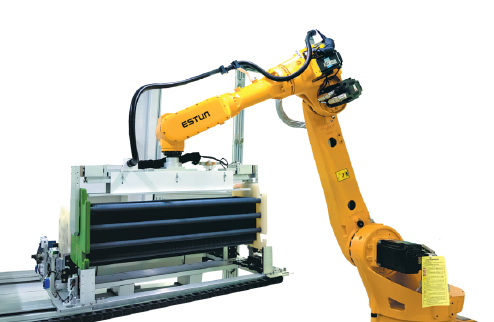Clean energy fueling overseas exports and development of related enterprises
Photovoltaic products are becoming a new driving force for China's exports and for Shanxi to boost the development of new quality productive forces in a targeted manner.
Shanxi, a traditionally energy-rich province, attaches great importance to the advancement of the photovoltaic industry. The province considers it an important direction to ensure energy security, green transformation, optimize the national energy structure and build a characteristic modern industrial system.
At the production base of Shanxi-based Jinneng Clean Energy Technology, or Jinergy – a world-leading PV manufacturer and clean energy provider incorporated under Jinneng Holding Group in Jinzhong city – more than 100 5G-connected smart carts are busy transporting silicon wafers to production lines with an annual output of 4 gigawatts of high-efficiency photovoltaic cells.
Each silicon wafer needs to go through 14 processes such as texturing, boron diffusion and coating to finally become the core component of photovoltaic modules – the photovoltaic cell.
Not long ago, Jinergy's TOPCon high-efficiency heterojunction solar cells were produced with a photoelectric conversion efficiency of more than 25.5 percent, one of the highest rates for the industry worldwide.
Jinergy planned to develop heterojunction cells in 2016. In 2017, it began to install and test production equipment for the cells at its Jinzhong base.
As the first domestic mass production facility of heterojunction cells, there was no industrial experience it could learn from during this period, leading to many challenging technological issues.
In this context, the research and development team of Jinergy conducted research, learning and equipment selection independently for heterojunction cells. They overcame various difficulties such as conductivity performance and reliability by themselves. In 2017, Jinergy's heterojunction solar cells realized mass production.
"To further promote the low-cost application of photovoltaics, in 2019, we began to research and develop the more advanced TOPCon cell technology in collaboration with the Shanghai Advanced Research Institute of the Chinese Academy of Sciences.
"We completed the project's construction and put it into operation in three years," said Yu Shiwei, overseas sales director of Jinergy.
"For downstream customers, the higher the efficiency of photovoltaic cells is, the higher the power can be generated by the components with the same area, which can reduce the cost of photovoltaic electricity generation," Yu said.
After experiencing multiple stages of growth in the photovoltaic industry, Jinergy has continuously made breakthroughs in cell technology and expanded manufacturing scale. At the same time, it has made ambitious expansions in international markets.
In 2023, Jinergy's export revenue amounted to approximately 470 million yuan ($64.83 million).It has been listed as a global first-tier component supplier by BloombergNEF for several consecutive years. Up to now, Jinergy has sold products to more than 50 countries overseas, according to Liu Xia, director of the marketing center at Jinergy.
Currently, the Shanxi photovoltaic industry chain, acting as a new driving force for local industrial development, is contributing to the country's dual carbon goals that aim to peak carbon dioxide emissions before 2030 and achieve carbon neutrality before 2060.
Data show that in 2023, the revenue of the photovoltaic manufacturing industry in Shanxi reached 20.2 billion yuan, up 49 percent year-on-year. Meanwhile, the annual production of photovoltaic cells reached 9.62 million kilowatt, a year-on-year increase of 21 percent.
The province's photovoltaic industry chain is now led by about 20 provincially or nationally leading enterprises including Jinergy and Lu'an Solar.
To achieve better results in the "new three" industries – namely new energy vehicles, lithium-ion batteries and photovoltaics – Shanxi has issued policies that support such enterprises in project construction, technological innovation, revenue growth and other aspects.
The province has deployed the overall strategy of "building, extending, supplementing and strengthening" the photovoltaic industry chain, attracting key enterprises and creating a new pattern of coordinated development among large, medium and small enterprises through policy guidance, industry support, investment attraction and other means.
This year, Shanxi will boost the development of the photovoltaic industry; launch major projects; promote the application of new technologies, new materials and new techniques; strengthen the core links of the industry chain such as silicon rods, wafers, cell sheets and modules; drive the development of supporting sectors such as photovoltaic glass, adhesives, frames and wires; and accelerate the construction of a photovoltaic industry cluster with an aim to exceed 100 billion yuan in industrial output value.
Zhang Xin contributed to this story.

From left: The production lines of photovoltaic cells by Jinergy are fully automated and are developed internally by the company. CHINA DAILY

A robot is used in the production of photovoltaic cells at Jinergy's plant. CHINA DAILY



